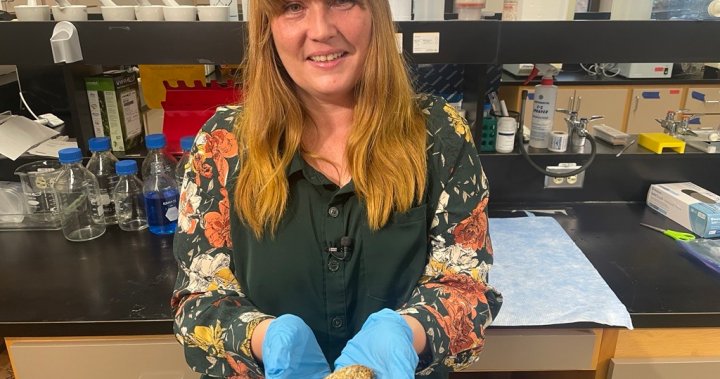Summarize this content to 2000 words in 6 paragraphs
It may seem like an unorthodox way to study polar bears, but it turns out the massive animals’ feces is offering vital clues into their health and the effects of climate change.
The “polar bear poop,” as it’s come to be known, is a valuable tool for researchers like Stephanie Collins, a professor at Dalhousie University’s department of agriculture and aquaculture in Halifax.“(It answers) how we can learn about the diet and whether or not that diet is contributing to the health of an animal,” she said.The samples come from two groups of polar bears: wild ones that ended up in “polar bear jail” in Churchill, Man., for getting too close to town and bears that live permanently in captivity at the Cochrane Polar Bear Habitat.“It was a lot of fun getting to take part in something that is directly correlating to what’s going on in the wild,” said Amy Baxendell-Young from the habitat. The samples have shown researchers how changes in the bears’ diet have affected their gut microbiome. Collins and her team determined the two groups have distinctively different microbiomes, which gives them a baseline for future studies on polar bear health.
Get breaking National news
For news impacting Canada and around the world, sign up for breaking news alerts delivered directly to you when they happen.
“Our gut microbiome tells us a lot about us. It can tell us about our health, our diet,” she said.All this is crucial as climate change leads to shrinking ice coverage, which leaves polar bears’ preferred meal of seals further out of reach.
More on Canada
More videos
Ice-free seasons have also extended, which means the window of time polar bears can spend on the ice platform has shrunk.The situation has forced the bears to find alternative food sources — ones that may not be as high-fat as they need.Knowing what that does to their diets and health can offer clues on how to help the bears.
“It’s one of those dreams where if you could find a way for them to do well but not need us, that would be the perfect solution,” said Collins.In the past, researchers at the University of Toronto have looked into polar bear scat to look at how certain chemical contaminants can build up inside the body. And a few years ago, the Assiniboine Park Zoo in Winnipeg used glitter in food to help track their polar bears’ poop. The data was used to learn about stress hormone levels to see how the bears were adjusting to life in captivity.
© 2024 Global News, a division of Corus Entertainment Inc.


